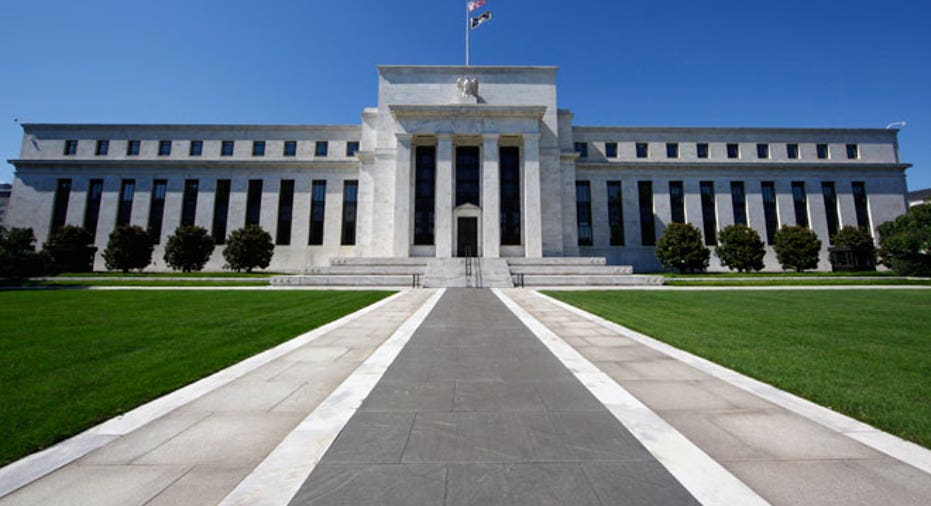Buying Stocks Ahead of the Fed Tends to Pay Off

Given the mysterious ways of the Federal Reserve and its outsized impact on the economy, investors often greet central bank policy decisions with a certain amount of trepidation.
Yet that apprehension seems to be working in the favor of those who have the courage to step up in front of the Fed by sinking cash into the equity markets.
Recent research from the New York Fed reveals that the S&P 500 has risen in 75% of the 24-hour periods before a Fed decision is announced since 1994, generating a median gain of 0.49%.
“Yes there’s illiquidity but there’s a very large potential to make money. For those who are bold enough to make the bet, they win big,” said Jim Rickards, a partner at JAC Advisors, a New York-based hedge fund.
The drift higher ahead of a Federal Open Market Committee policy announcement extends beyond Wall Street, trickling down to major foreign markets as well, the New York Fed report said.
In fact, the authors calculated that the pre-FOMC drift accounts for a staggering 80% of the U.S.’s annual excess equity premium since 1994. The excess return on the S&P 500 in the 24-hour window before a Fed decision has been 3.89% a year, compared with just 0.89% on all remaining trading days, the report said.
“We thought ‘Sell in May’ was good because it potentially gave you nearly half a year off. Now you only have to show up eight days,” Art Cashin, UBS’s (NYSE:UBS) director of floor operations at the New York Stock Exchange, wrote in a note.
Loss of Liquidity
The authors of the New York Fed report, which was released last fall and revised in June, seem mystified by the phenomenon.
“These returns are puzzling and difficult to explain with standard asset pricing models,” David Lucca and Emanuel Moench wrote.
However, some of the pre-FOMC gains seem to be tied to the uncertainty created by the announcement and resulting decrease in volume, which leads to a decrease in liquidity.
The authors note that the bond and foreign-exchange markets don’t enjoy a similar drift higher before Fed decisions.
“That makes sense to me because those markets are much bigger and much more liquid,” said Rickards, author of Currency Wars: The Making of the Next Global Crisis. “They’re much less vulnerable to a small group of traders making bets on one side of the table.”
Rickards also said the New York Fed paper “is another nail in the coffin of the efficient market hypothesis, which is at the root of a lot of modern financial economics.”
This theory holds that no single investor can beat the market because prices always instantaneously and smoothly reflect all relevant information. Essentially, the market is all-knowing and thus always accurately priced.
Risk Compensation
However, the pre-FOMC drift seems to support the risk-aversion theory of behavioral economics that says investors put greater weight on not losing money than they do on making money.
“Not all investors want to” be in the market ahead of headline events, “so you have to give the ones who are some extra return to compensate them for the risk,” said Darrell Duffie, a finance professor at Stanford.
The New York Fed paper finds that the S&P 500 has not generated “abnormal excess returns” around other major macroeconomic events, including data releases on gross domestic product, ISM manufacturing, weekly jobless claims or housing starts.
The pre-FOMC drift theory will be put to the test once again this week as Ben Bernanke and the Fed are scheduled to announce a highly-anticipated decision on Thursday.
Despite “a lot of signaling” from the Fed about the likelihood of further monetary policy easing, Rickards said, many investors will choose to “sit on the sidelines until Thursday afternoon or Friday.”
“You have a minority of players willing to make the bet and they will be very well rewarded,” he said.
Jumping on the Bandwagon?
Before you leap into the markets ahead of Thursday’s decision, note that the pre-FOMC drift didn't hold true about 25% of the time.
Also, keep in mind there are a number of market patterns that have had a more mixed track record in recent years, including the aforementioned “Sell in May” strategy and the tendency for stocks to rise in the beginning of the year, known as the January Effect.
The Dow Jones Industrial Average has declined in three of the past five January’s and investors who sold on May 1 of this year would have lost money.
The funny thing about these market patterns is they don’t work if everyone follows them because depending on the trade, there would be too many buyers or sellers.
“If you’re in a hedge fund and you find an anomaly you probably don’t want to tell anybody because you want to exploit it,” said Rickards. “Once they become well known and publicized a lot of people jump on the bandwagon and the effect tends to fade.”